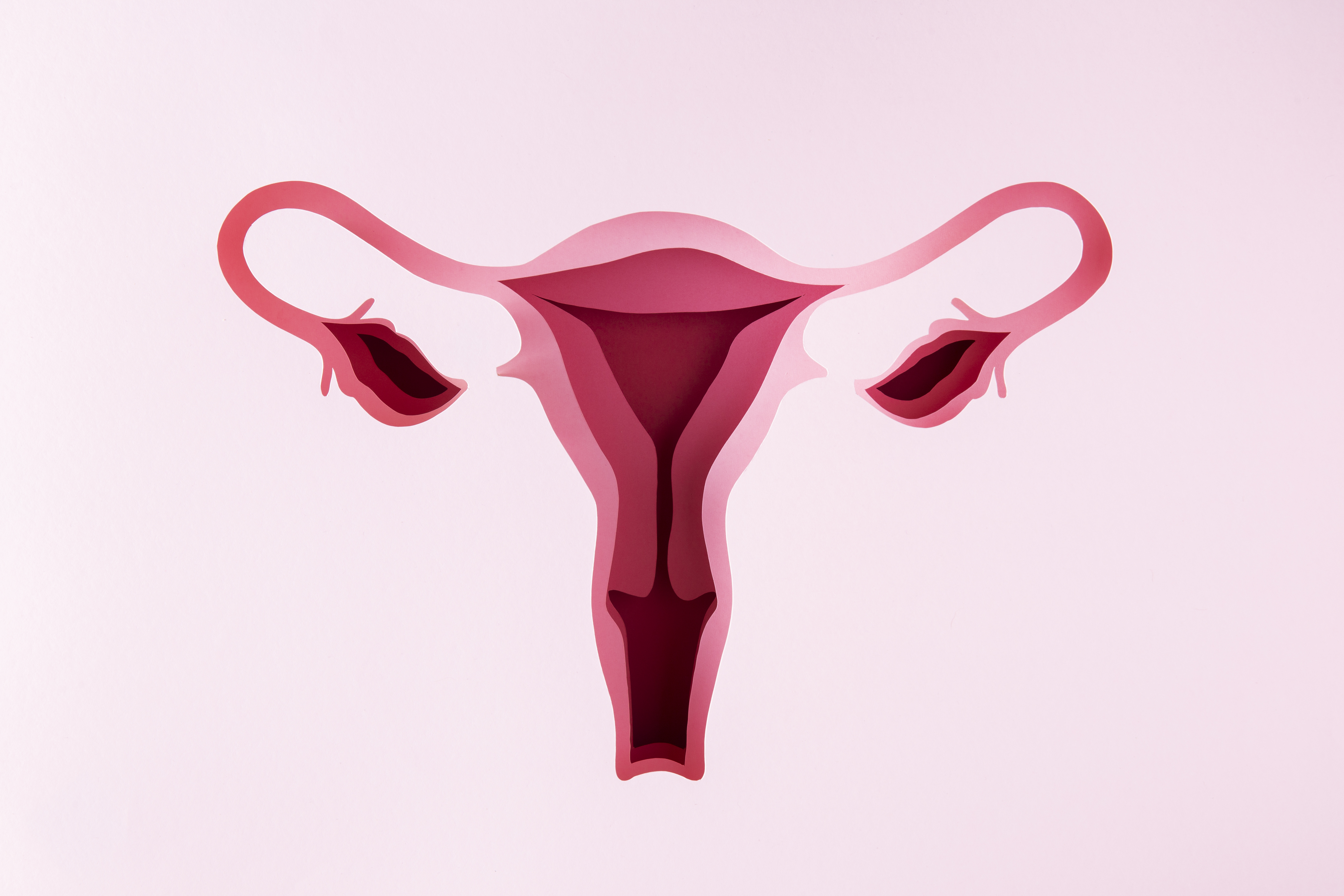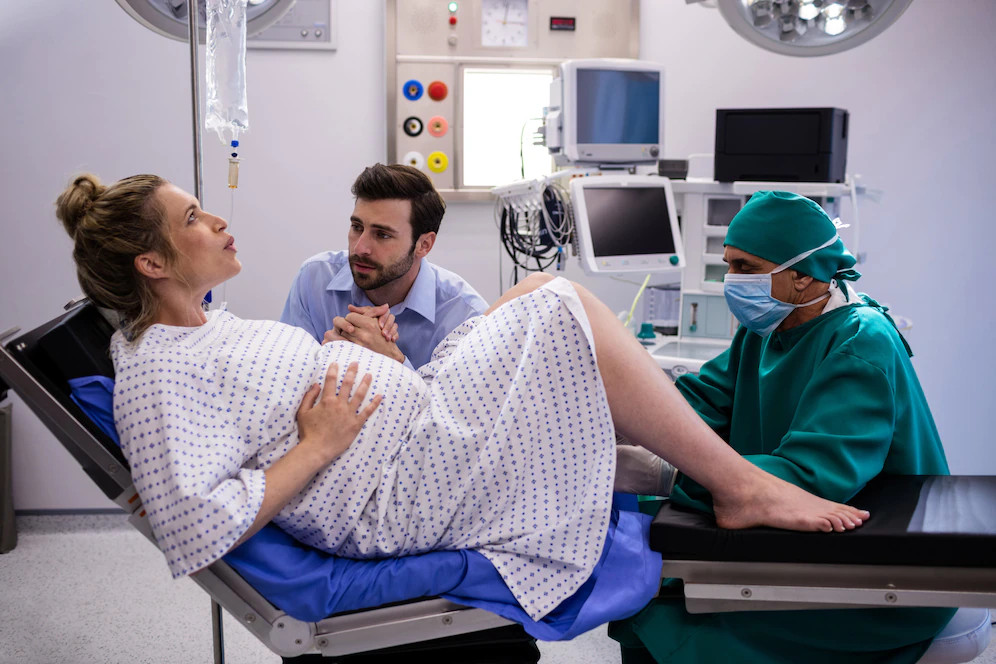Definisi
Kelainan janin adalah kelainan struktural atau fungsional yang terjadi selama didalam kandungan. Dapat disebut juga dengan sebutan kelainan bawaan, dan kelainan kongenital. Kondisi ini terjadi dalam kandungan dan biasanya teridentifikasi sebelum atau saat kelahiran, atau bisa juga di tahun kehidupan tertentu. Setidaknya diperkirakan 6% dari bayi di seluruh dunia lahir dengan kelainan, menyebabkan ratusan hingga ribuan kematian yang berhubungan dengan kelainan janin. Beberapa kelainan janin dapat ditangani dengan opsi tata laksana pembedahan ataupun non pembedahan, seperti bibir sumbing, hernia, dan clubfoot. Sedangkan, kelainan lainnya seperti kelainan jantung, kelainan tabung neural, dan sindrom down dapat memengaruhi kehidupan secara jangka panjang.
Baca mengenai kelainan jantung pada Anak di sini: Penyakit Jantung Bawaan - Definisi, Penyebab, Gejala, dan Pengobatannya
Kelainan janin merupakan salah satu penyakit global yang diperhatikan oleh WHO terutama pada negara dengan pendapatan rendah dan menengah. Rata-rata, pada negara tersebut juga belum tersedia fasilitas yang memadai untuk menangani kelainan janin sehingga meningkatkan angka kesakitan dan kematian pada janin dan bayi baru lahir.
Penyebab
Terdapat beberapa penyebab dari kelainan janin, diantaranya adalah faktor genetik, faktor sosioekonomi, faktor lingkungan, hingga faktor yang hingga kini tidak diketahui penyebabnya. Akan dibahas lebih lanjut dibawah ini:
- Faktor genetik
Beberapa kasus kelainan janin disebabkan oleh abnormalitas genetik, seperti adanya kelainan kromosom yang terbentuk di awal kehamilan. Contohnya seperti kelainan trisomi 21 atau yang dikenal dengan sindrom Down, atau kelainan gen seperti penyakit sistik fibrosis.
Konsanguinitas atau ketika kedua orangtua masih memiliki hubungan darah juga berkontribusi terhadap angka kejadian terjadinya kelainan janin genetik, dan meningkatkan risiko kematian bayi dan anak, disabilitas intelektual, dan kelainan lainnya.
- Faktor sosioekonomi dan demografi
Negara dan daerah dengan pendapatan rendah menjadi salah satu faktor yang berperan secara tidak langsung terhadap kejadian kelainan janin. Diperkirakan mencapai angka 94% kejadian kelainan janin terjadi di negara dengan pendapatan rendah dan menengah. Hal ini berhubungan dengan kurangnya akses terhadap makanan bergizi di wanita hamil, paparan terhadap faktor dan agen seperti alkohol, infeksi, dan fasilitas dan skrining kesehatan yang kurang memadai. Usia ibu juga menjadi faktor risiko terhadap kelainan janin dalam kandungan. Usia ibu diatas 35 tahun juga meningkatkan risiko terhadap abnormalitas kromosom dan sindrom Down.
- Faktor lingkungan (termasuk infeksi)
Faktor lainnya terjadi akibat lingkungan seperti infeksi pada ibu seperti sifilis, rubella, paparan radiasi, zat polutan tertentu, defisiensi nutrisi ibu terhadap beberapa zat gizi seperti iodin, asam folat, penyakit ibu seperti diabetes gestasional, atau obat - obatan tertentu seperti alkohol dan fenitoin.
- Penyebab yang tidak diketahui
Selain faktor genetik dan lingkungan berinteraksi, kelainan janin dapat disebabkan karena hal yang tidak diketahui seperti kelainan jantung bawaan, bibir sumbing, dan club foot.
Faktor Risiko
Seperti yang sudah dijelaskan di atas, terdapat banyak faktor risiko yang berhubungan dengan kejadian kelainan janin. Di antaranya adalah:
- Kekurangan zat nutrisi seperti asam folat
- Usia ibu yang diatas 35 tahun atau kurang dari 18 tahun
- Penyakit ibu seperti diabetes dan kelainan tiroid
- Penyakit infeksi seperti sifilis, rubella
- Penyalahgunaan alkohol dan narkotika
- Obesitas
- Konsumsi rokok
- Penggunaan obat - obatan tertentu tanpa pengawasan dokter
- Polusi lingkungan
- Status sosioekonomi yang rendah
- Faktor genetik dan konsanguinitas
Gejala
Sebetulnya, kelainan janin dapat dideteksi dari kandungan. Namun banyaknya jenis kelainan janin maka gejala dari tiap kelainan tentunya akan berbeda. Dari kehamilan, tidak ada gejala tertentu yang dialami ibu. Namun ibu hamil patut waspada bila mengalami gejala seperti di bawah ini:
- Demam
- Mual muntah berlebihan
- Sesak napas
- Tekanan darah tinggi
- Obesitas
- Diabetes gestasional
Segeralah ke dokter bila Anda mengalami keluhan tersebut, sebagian besar bentuk kelainan janin dalam kandungan dapat dideteksi dengan melakukan pemeriksaan USG.
Diagnosis
Diagnosis dari kelainan pada janin dapat dilakukan dengan wawancara medis antar pasien dan dokter, pemeriksaan fisik, dan pemeriksaan penunjang.
Wawancara medis dapat dilakukan dengan menanyakan keluhan pasien selama kehamilan. Selain itu, dokter dapat menanyakan riwayat kehamilan sebelumnya, riwayat aktivitas sehari-hari, gaya hidup, pekerjaan, riwayat pengobatan, dan riwayat penyakit pada keluarga.
Selanjutnya dokter akan melakukan pemeriksaan fisik. Pemeriksaan fisik dilakukan dengan memeriksa keadaan umum pasien, tekanan darah, laju napas, suhu tubuh, dan nadi. Kemudian dokter akan melakukan pemeriksaan kandungan. Dimulai dengan mengukur jarak antara tulang kemaluan hingga perut secara vertikal, melakukan palpasi atau sedikit penekanan pada bagian perut untuk mengetahui posisi janin, serta melakukan pemeriksaan pada bagian vagina bila dirasa perlu.
Kemudian dokter akan melakukan pemeriksaan penunjang berupa USG. Dari USG dokter dapat melihat posisi janin, memperkirakan berat janin saat ini, dan melihat apakah terdapat kelainan bentuk atau fungsi pada janin. Bila terdapat kecurigaan tertentu, maka dokter dapat melakukan pemeriksaan lain pada ibu seperti pemeriksaan darah dan pemeriksaan urin.
Tata Laksana
Beberapa kelainan janin dapat diatasi dengan pengobatan medis atau pembedahan. Hal ini akan bergantung dengan fasilitas kesehatan yang tersedia. Terapi pembedahan dapat mengurangi kesakitan terutama pada kasus kelainan jantung bawaan, bibir sumbing, dan beberapa kelainan struktural atau kelainan anatomi.
Sedangkan untuk beberapa kelainan janin terutama kelainan kromosom, tidak ada terapi khusus yang dapat dilakukan untuk menyembuhkan kondisi tersebut. Pengobatan akan berupa suportif atau sebagai dukungan agar anak dapat tumbuh dan berkembang tanpa hambatan.
Komplikasi
Komplikasi kelainan pada janin bervariasi, dapat berupa gangguan tumbuh kembang, hingga kematian pada kasus yang cukup parah.
Pencegahan
Pencegahan kelainan janin merupakan hal yang membutuhkan kerja sama dari seluruh pihak baik itu kementerian kesehatan, pemerintah, dan masyarakat. Usaha yang penting untuk dilakukan antara lain adalah:
- Memastikan remaja putri dan ibu hamil mendapatkan asupan nutrisi yang cukup termasuk buah, sayur, dan memastikan berat badan dalam indeks massa tubuh normal.
- Memastikan konsumsi vitamin dan mineral pada remaja putri dan ibu hamil
- Memastikan ibu hamil menghindari zat yang berbahaya seperti alkohol dan rokok
- Menghindari perjalanan ke tempat dengan penyakit endemi tertentu terutama untuk ibu hamil untuk mengurangi risiko terpaparnya infeksi
- Mengurangi atau menghilangkan paparan lingkungan yang mengandung polutan dan pestisida selama kehamilan
- Mengontrol diabetes dari sebelum dan selama kehamilan. Pergunakan insulin bila diperlukan
- Memastikan ibu hamil tidak mendapatkan paparan radiasi yang berlebihan dan mempertimbangkan keuntungan dan risiko yang dapat dialami akibat paparan tersebut
- Vaksinasi, terutama vaksinasi terhadap virus rubella baik itu untuk ibu dan anak
- Meningkatkan pengetahuan akan pengetahuan dan pencegahan kelainan janin baik itu di tenaga kesehatan ataupun masyarakat
- Melakukan skrining untuk penyakit infeksi sejak merencanakan kehamilan dan melakukan pemeriksaan kehamilan rutin saat hamil
Kapan harus ke dokter?
Rutinlah ke dokter selama kehamilan berlangsung. Pemeriksaan kehamilan dapat dilakukan minimal sebanyak 3 kali selama kehamilan, yaitu 1 kali saat trimester pertama, 1 kali saat trimester kedua, dan 2 kali saat trimester ketiga. Ikuti anjuran dokter atau bidan yang merawat sehingga Anda dapat menurunkan risiko terkena kelainan janin.
Mau tahu informasi seputar penyakit lainnya? Cek di sini, ya!
- dr. Monica Salim
Centers for Disease Control and Prevention - Congenital Anomalies. (2019). Retrieved 2 November 2022, from https://www.cdc.gov/ncbddd/birthdefects/surveillancemanual/facilitators-guide/module-1/mod1-2.html
DeSilva M., et al., (2018). Congenital Anomalies: Case definition and guidelines for data collection, analysis, and presentation of immunization safety data. Retrieved 2 November 2022, from https://www.ncbi.nlm.nih.gov/pmc/articles/PMC5139892/
World Health Organization - Birth Defects. (2022). Retrieved 2 November 2022, from https://www.who.int/news-room/fact-sheets/detail/birth-defects











